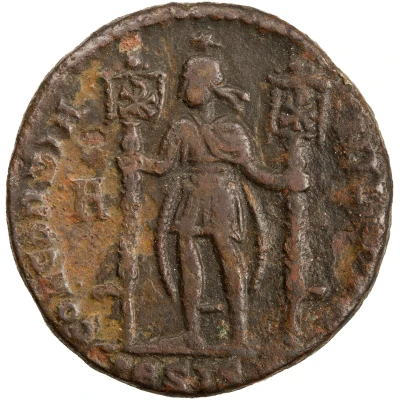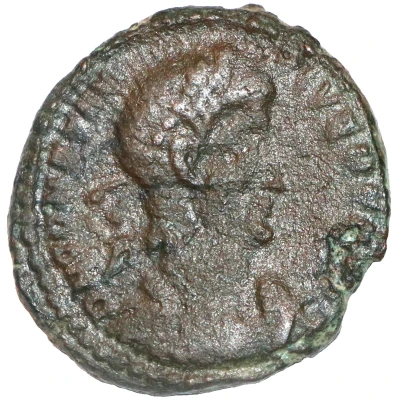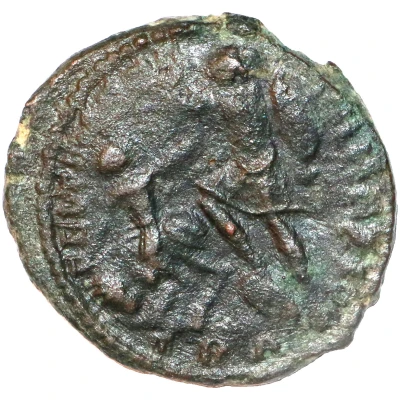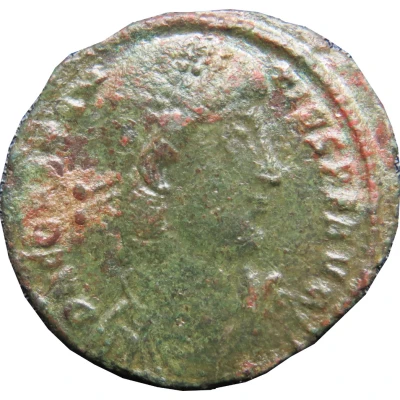
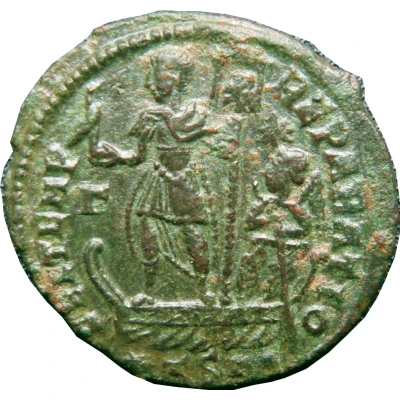

© ECapoe
Nummus - Constantius II FEL TEMP REPARATIO; with star in right field, star and dot in exergue; Thessalonica
| Bronze | 4.28 g | 24 mm |
| Issuer | Rome › Roman Empire (27 BC - 395 AD) |
|---|---|
| Emperor | Constantius II (337-361) |
| Type | Standard circulation coin |
| Years | 350-351 |
| Value | Nummus (1⁄7200) |
| Currency | Solidus, Reform of Constantine (AD 310/324 – 395) |
| Composition | Bronze |
| Weight | 4.28 g |
| Diameter | 24 mm |
| Shape | Round (irregular) |
| Technique | Hammered |
| Orientation | Medal alignment ↑↑ |
| Demonetized | Yes |
| Updated | 2024-10-04 |
| Numista | N#83691 |
|---|---|
| Rarity index | 85% |
Reverse
Emperor in military dress standing left on galley, holding a phoenix on globe and a chi-rho standard, Victory at helm steers the ship. Γ in left field, * in right field. Mintmark with star and dot in exergue.
Scripts: Latin, Greek
Lettering:
FEL TEMP REPARATIO
Γ *
Comment
The left field Γ represents the minting year (converted in Gregorian calendar: 350-351), each minting year has a separate RIC reference. If you own a Α (348-349) or a Β (349-350), please create a separate file.Please note that, even part of the same file, the 5th officina is not under any RIC reference.
Interesting fact
The Nummus - Constantius II coin was part of a large-scale currency reform implemented by Emperor Constantius II in the 4th century AD. The reform aimed to address inflation and restore confidence in the Roman Empire's currency. The new coinage system introduced by Constantius II featured a standardized design and a consistent weight and size for coins, which helped to stabilize the economy and facilitate trade across the empire. The Nummus - Constantius II coin, with its distinctive star and dot design, is a tangible representation of this significant economic and historical event.

